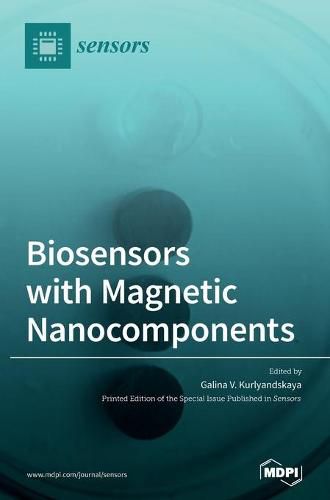Readings Newsletter
Become a Readings Member to make your shopping experience even easier.
Sign in or sign up for free!
You’re not far away from qualifying for FREE standard shipping within Australia
You’ve qualified for FREE standard shipping within Australia
The cart is loading…






This title is printed to order. This book may have been self-published. If so, we cannot guarantee the quality of the content. In the main most books will have gone through the editing process however some may not. We therefore suggest that you be aware of this before ordering this book. If in doubt check either the author or publisher’s details as we are unable to accept any returns unless they are faulty. Please contact us if you have any questions.
The selective and quantitative detection of biocomponents is greatly requested in biomedical applications and clinical diagnostics. Many traditional magnetic materials are not suitable for the ever-increasing demands of these processes. The push for a new generation of microscale sensors for bioapplications continues to challenge the materials science community to develop novel nanostructures that are suitable for such purposes. The principal requirements of a new generation of nanomaterials for sensor applications are based on well-known demands: high sensitivity, small size, low power consumption, stability, quick response, resistance to aggressive media, low price, and easy operation by nonskilled personnel. There are different types of magnetic effects capable of creating sensors for biology, medicine, and drug delivery, including magnetoresistance, spin valves, Hall and inductive effects, and giant magnetoimpedance. The present goal is to design nanomaterials both for magnetic markers and sensitive elements as synergetic pairs working in one device with adjusted characteristics of both materials. Synthetic approaches using the advantages of simulation methods and synthetic materials mimicking natural tissue properties can be useful, as can the further development of modeling strategies for magnetic nanostructures.
$9.00 standard shipping within Australia
FREE standard shipping within Australia for orders over $100.00
Express & International shipping calculated at checkout
This title is printed to order. This book may have been self-published. If so, we cannot guarantee the quality of the content. In the main most books will have gone through the editing process however some may not. We therefore suggest that you be aware of this before ordering this book. If in doubt check either the author or publisher’s details as we are unable to accept any returns unless they are faulty. Please contact us if you have any questions.
The selective and quantitative detection of biocomponents is greatly requested in biomedical applications and clinical diagnostics. Many traditional magnetic materials are not suitable for the ever-increasing demands of these processes. The push for a new generation of microscale sensors for bioapplications continues to challenge the materials science community to develop novel nanostructures that are suitable for such purposes. The principal requirements of a new generation of nanomaterials for sensor applications are based on well-known demands: high sensitivity, small size, low power consumption, stability, quick response, resistance to aggressive media, low price, and easy operation by nonskilled personnel. There are different types of magnetic effects capable of creating sensors for biology, medicine, and drug delivery, including magnetoresistance, spin valves, Hall and inductive effects, and giant magnetoimpedance. The present goal is to design nanomaterials both for magnetic markers and sensitive elements as synergetic pairs working in one device with adjusted characteristics of both materials. Synthetic approaches using the advantages of simulation methods and synthetic materials mimicking natural tissue properties can be useful, as can the further development of modeling strategies for magnetic nanostructures.